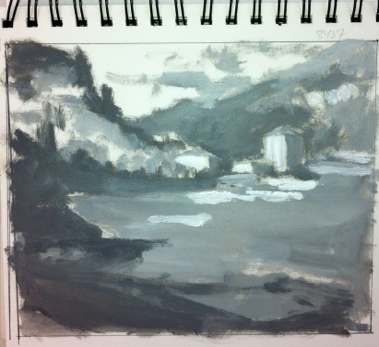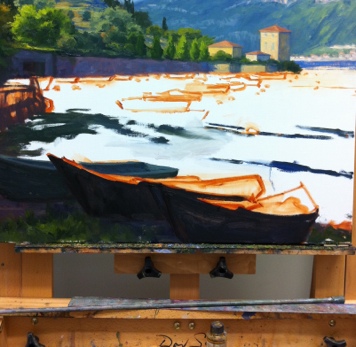Revisions, revisions...and finally the final!
/Well is this the slowest moving demo ever, or what? Sorry about that, and thanks for sticking with me! I have enjoyed this painting, but I struggled with the foreground boats I had planned to include. I took them out and put them back in several times. I felt like I wanted something there to lead the eye into the picture, but the boats as I had them seemed to block my entrance rather than aid it. So I finally settled on a single rowboat to lead the eye in while still allowing some breathing room.

After that was all hashed out (whew! ) I set about laying in the background boats against the retaining wall, half of which are in shadow, and half in light.

Next came the masts, sails, and water. The reflections in this scene were very soft and shimmery. Light reflections tend to cast a wee bit darker than what is being reflected, and dark ones are a tad lighter. I tried to keep the whites on the warm side, as they take on a lovely golden glow as they glimmer in the low angle of the sun.
"Pescallo Glow"
Oil on Linen, 24x30"

So, did I keep with my grayscale plan I mapped out at the beginning of this demo? You tell me:


I must say that I liked having the grayscale notan and I actually did reference it often during the entire process of my painting. While I think it is a valuable tool, I think I would still have benefitted from doing a compositional line drawing in addition, especially with such a complicated scene. I probably reference the notan sketch more throughout the painting, but a strong compositional line plan may very well have eliminated the foreground boat dilemma I struggled with midway through the painting. Live and learn!
















